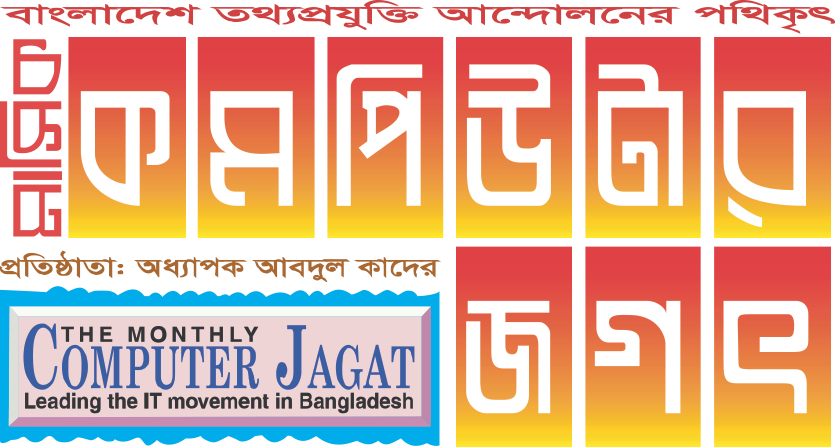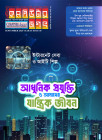হোম > ICT for Health Care
লেখক পরিচিতি
লেখকের নাম:
ওমর ফয়সাল
মোট লেখা:৮
লেখা সম্পর্কিত
পাবলিশ:
২০১১ - নভেম্বর
তথ্যসূত্র:
কমপিউটার জগৎ
লেখার ধরণ:
সাস্থ
তথ্যসূত্র:
ইংরেজি সেকশন
ভাষা:
বাংলা
স্বত্ত্ব:
কমপিউটার জগৎ
ICT for Health Care
Information and Communication Technologies is an important platform to reach the medical services in everywhere in Bangladesh. Even these technologies driven tools are saving thousands of lives. Bangladesh government is taking many initiatives to reduce the gap between doctors and patients.
The Prime Minister Sheikh Hasina has been awarded the South-South Award 2011 for her outstanding contributions to improve and replicate the implementation of the health-related Millennium Development Goals and beyond the national level. Secretary General of the International Telecommunication Union (ITU) Hammadou Touré handed over the award at a colorful ceremony in New York, USA last month. This year's theme of the award was 'Digital Health 4 Digital Development'. Sheikh Hasina was selected for the award for her innovative idea to use the information and communication technology for better best of women and children. Receiving the award Sheikh Hasina said it was a great honor for her and people of Bangladesh. She said her government is striving to make Bangladesh a middle- income digital country within a decade through exploiting the modern inventions in the areas of information and technology. The country's 4,500 local government institutions have been already linked with the IT facilities and all the 11,000 community clinics across the country were brought under the internet network, she said, adding that a social movement has been launched for digitization of the administration, ports, customs, agriculture, banks and capital markets and other sectors. She referred to the conferment of the MDG award on her last year for success in reducing maternal and child mortality rate in the country and said mobile facilities are being used to prescribe medicine for malaria, tuberculosis and other diseases in the rural areas. The award will be a great inspiration for her and the people of Bangladesh to achieve the cherished goal in the areas for development for women and children, she said.
The International Telecommunication Union (ITU), South South News, Permanent Mission of Antigua and Barbuda to the United Nations and UN Economic Commission for Africa have jointly organized the awards.
Under the sub category of ‘The Global Women & Children’s Health Awards’ the First Lady of El Salvador H.E. Dr. Vanda Pignato, H.E. Leonel Fernandez Reyna, President of Dominican Republic and Prime Minister of Norway Mr. Jens Stoltenberg have got the similar awards.
What is Millennium Development Goals (MDGs)?
> The MDGS are eight international development goals that all 193 UN member states and at least 23 international organizations have agreed to achieve by the year 2015. They include eradicating extreme poverty, reducing child mortality rates, fighting disease epidemics such as AIDS, and developing a global partnership for development. The aim of the MDGs is to encourage development by improving social and economic conditions in the world's poorest countries. They derive from earlier international development targets, and were officially established following the Millennium Summit in 2000, where all world leaders present adopted the United Nations Millennium Declaration.
The MDGs were developed out of the eight chapters of the United Nations, signed in September 2000. There are eight goals with 21 targets, and a series of measurable indicators for each target. The goals are:
1. To eradicate extreme poverty and hunger.
2. To achieve universal primary education.
3. To promote gender equality and empower women.
4. To reduce child mortality rates.
5. To improve maternal health.
6. To combat HIV/AIDS, malaria, and other diseases.
7. To ensure environmental sustainability.
8. To develop a global partnership for development.
Why Digital Health 4 Digital Development?
> The year 2010 proved to be a key milestone in the United Nations’ family efforts to accelerate progress on Millennium Development Goals 4&5 for Child Mortality and Maternal Health in both urban and rural environments with the launch in September of Secretary General Ban Ki-moon’s Global Strategy for Women & Children’s Health. This strategy was supported by contributions from a number of Working Groups including an Innovation Working Group, as well as the launching of the Commission on Information & Accountability for Women and Children’s Health. Meanwhile, the multi-stakeholder Broadband Commission for Digital Development delivered its final report to the UN Secretary General and Heads of States and Government attending the 64th General Assembly.
The year 2011 now promises to build on this progress with both the High Level Meetings (HLMs) during the 65th and 66th sessions of the UN General Assembly to review the Implementation of the Declaration of Commitment on HIV/AIDS and the Political Declaration on HIV/AIDS (June 8/9, 2011), and the first High Level Event on the prevention and control of Non-Communicable Diseases (NCDs) (September 19-20, 2011). A unique opportunity exists to bring together the inter-linked global health-related MDG and NCD agendas, most particularly through the catalytic and unifying force of “digital health” (eHealth+mHealth) and development at the national, regional and global levels, via a continuum of health care and health information and communications technologies (ICTs) to build a global partnership for development consistent with MDGs .
In summary, digital health case can play a major role in empowerment of people-centered health care systems. Providing opportunity for individuals and the community to be informed and communicate with health providers through, for example, mobile networked equipment can enable registration of health-related events such as pregnancy and prevent or quickly respond to events such as obstetric complication with regard to MDG 4 & 5. The performance of the health system can be measured by its ability to improve the health of people and communities and to reduce both communicable and non-communicable diseases.
One imminent revolutionary benefit that mobile phone technology could bring about is its use for the provision of healthcare advisory services. The mobile device is becoming popular in every spheres of socio-economic demography of the people. The Bangladesh government Directorate General of Health Services (DGHS) has introduced in every Upzilla (sub-district) health complex based telephony advice centres. Any patient can avail this service by calling to a fixed mobile number and could get advice from doctor or nurses. Through this 24 hours service a patient can ask any health related questions and solicit suggestion over mobile phone. The DGHS have distributed approximately 451 mobile handset including SIM card to Upzilla and district health complex centres to spread up mobile based health care packages. The people can avail these services without paying any consultancy fees. However, the looming impediment for the sustainability of such services is – none of the above mentioned voice based services reserves a provision of maintaining previous medical records of the patients. This lack in system integration has isolated DGHS’s initiative into a mere over-the phone advices, which doesn’t have a feasible impact on the service rendered. Also, these services only allow over-the-phone solicitation on primitive cases and a follow-up through SMS are not incorporated. Hence, the patients need to make call to doctor for every advices sought. Due to this constraint, while giving advice even to a repeat patient, the advising doctor is bound to rely on the phone conversation in that instant. Due to the absence of any provision of reviewing past history, the advices from the qualified doctors often may not lead to convalescence for the patient. Eventually, this demeans the envisioned purpose of such value added services. It may also lead to miscommunication, distrust and credibility of such initiatives. Healthcare sector, where Patient-Doctor relationship is crucial to obtain trust, such absence of data mining poses a considerable threat to any rapport building initiatives of the organizations involved. For gathered the actual scenarios in project areas has been talked with seven medical doctors. They are receiving/answering incoming calls from patients under the DGHS scheme. One doctor from Dimla Thana health Complex in the district of Nilphamri has said ‘‘this is a nice media to interconnect with doctors, many patients come to hospital for trivial problems and trifling conditions that could be attended through mobile phone. Due to the horrid road communications network the patients live in far away from hospital, sometimes have to travel 15 kilometers to get the government hospital. So in this case people could avail cost effective basic healthcare advice over mobile phone.”
The dreams are so far away. The government are planning and trying hardly to spread-up the health care services in all villages. There are 2,213 public and private hospitals in Bangladesh with a capacity of only 51,684 beds. The ratio between patients and hospitals bed is 1 for every 2,665 people, 1 nurse for 6,342 patients and 1 doctor for 3,012 patients. (BDNEWS24.COM, 2010). Still now government didn’t make any central patients health records. We hope the government will implement proper health care services through the driven ICT tools.
[Source: Internet, South South News, Omar Faisal (2011). Mobile Phone based health care in Bangladesh. IFIP WG 9.4. Kathmandu. Nepal. Paper id 38]
CJ WEB
Feedback mofaisal@gmail.com
লেখাটি পিডিএফ ফর্মেটে ডাউনলোড করুন
লেখাটির সহায়ক ভিডিও
পাঠকের মন্তব্য
২০১১ - নভেম্বর সংখ্যার হাইলাইটস
অনুরূপ লেখা




